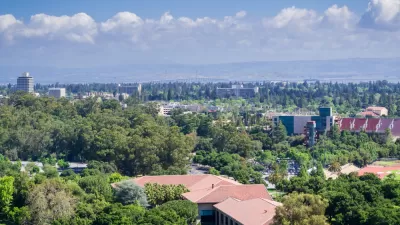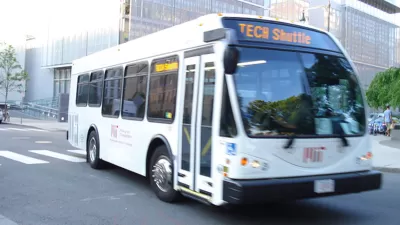Noting the Bay Area's relatively slow growth rate over the past two decades, Timothy B. Lee argues that the area's "bad housing policies" are harming business growth and investment opportunities in Silicon Valley.
Commenting on a recent article in Wired exploring the increasingly unfavorable market for investment in Silicon Valley, Lee ponders what is responsible for suppressing the "natural resources of the startup world" - people, real estate, and support services - noted in the article. He locates the root of the problem in the area's growth management policies.
"Probably the most important reason, as Ryan Avent has pointed out, is that housing regulations make it impossible to build a significant number of new housing units. A variety of regulations-minimum lot sizes, maximum building heights, parking mandates, restrictions on renting out basements, and so forth-place an upper bound on the number of units of housing that can be built in any given municipality in the Bay Area. And developers have simply run out of new places to build that are within a reasonable commuting distance of Silicon Valley or San Francisco"
Noting that since 1990, the population of the Bay Area has grown by less than 20 percent (less than the growth rate for the country as a whole), Lee argues that based on "more reasonable" benchmarks for growth ("Atlanta, Phoenix, or Las Vegas, all of which roughly doubled in size in the last 20 years"), the Bay Area should have 11 million residents, rather than its current 7 million population.
"Among those extra 4 million people would likely have been hundreds of thousands of additional engineers starting new firms or expanding the Google and Facebook workforces. In short, the reason there's too much money chasing too few businesses isn't that the country is running out of people with good technology ideas. It's just that bad housing policies mean that there's nowhere for additional people to live"
FULL STORY: Why The Bay Area Should Have 11 Million Residents Today

Maui's Vacation Rental Debate Turns Ugly
Verbal attacks, misinformation campaigns and fistfights plague a high-stakes debate to convert thousands of vacation rentals into long-term housing.

Planetizen Federal Action Tracker
A weekly monitor of how Trump’s orders and actions are impacting planners and planning in America.

In Urban Planning, AI Prompting Could be the New Design Thinking
Creativity has long been key to great urban design. What if we see AI as our new creative partner?

King County Supportive Housing Program Offers Hope for Unhoused Residents
The county is taking a ‘Housing First’ approach that prioritizes getting people into housing, then offering wraparound supportive services.

Researchers Use AI to Get Clearer Picture of US Housing
Analysts are using artificial intelligence to supercharge their research by allowing them to comb through data faster. Though these AI tools can be error prone, they save time and housing researchers are optimistic about the future.

Making Shared Micromobility More Inclusive
Cities and shared mobility system operators can do more to include people with disabilities in planning and operations, per a new report.
Urban Design for Planners 1: Software Tools
This six-course series explores essential urban design concepts using open source software and equips planners with the tools they need to participate fully in the urban design process.
Planning for Universal Design
Learn the tools for implementing Universal Design in planning regulations.
planning NEXT
Appalachian Highlands Housing Partners
Mpact (founded as Rail~Volution)
City of Camden Redevelopment Agency
City of Astoria
City of Portland
City of Laramie





























